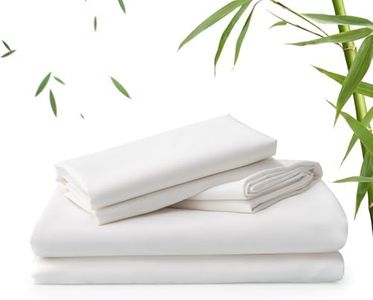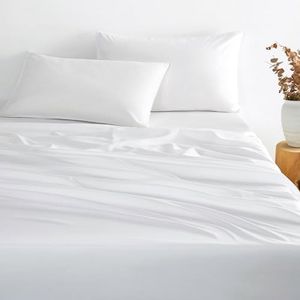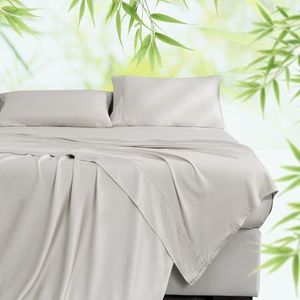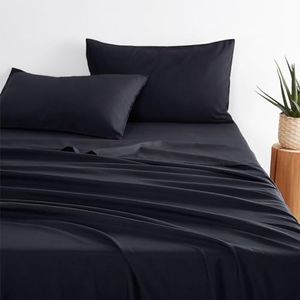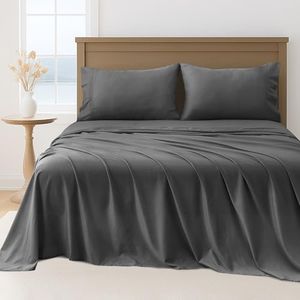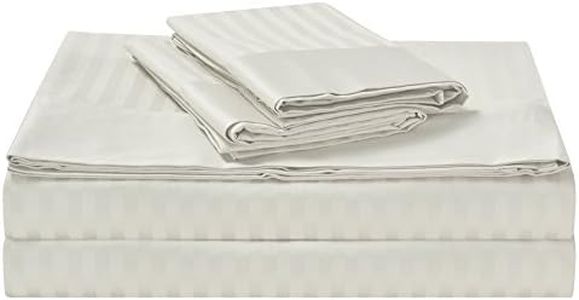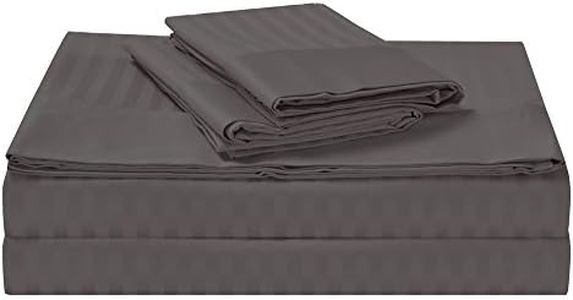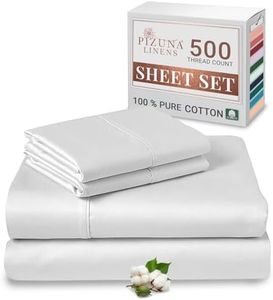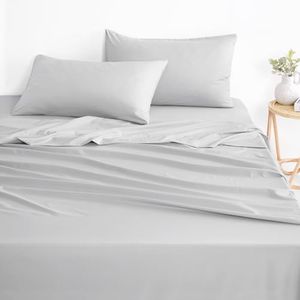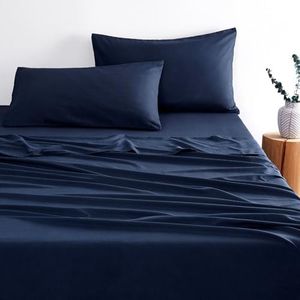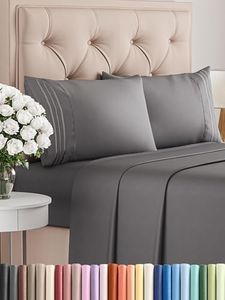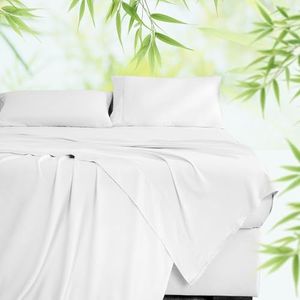We Use CookiesWe use cookies to enhance the security, performance,
functionality and for analytical and promotional activities. By continuing to browse this site you
are agreeing to our privacy policy
10 Best sheets
From leading brands and best sellers available on the web.By clicking on a link to a third party's website, log data is shared with that third party.
Buying Guide for the Best sheets
When choosing sheets for your bed, it's important to focus on comfort, durability, and fit. Sheets can have a big impact on how well you sleep, so understanding the main features can help you make a smart choice. Take time to consider where and how you'll use them—the climate, your sensitivity to fabrics, and your preferred sleeping experience all play a part in picking a set that's right for you.MaterialMaterial refers to the fabric used to make the sheets, such as cotton, linen, microfiber, or bamboo. This is important because it affects softness, breathability, and how easy the sheets are to care for. For example, cotton is popular for its softness and breathability, while microfiber can be more affordable and wrinkle-resistant. If you tend to sleep hot, look for lightweight, breathable materials, while those looking for durability might choose linen. Select a material based on your skin sensitivity, climate, and personal comfort preference.
Thread CountThread count is the number of threads woven together per square inch of fabric, and it's often used as a sign of quality. However, higher isn't always better; a count between 200-400 can be very comfortable for cotton sheets, while anything higher may not always feel softer and could reduce airflow. If you value softness, look for a medium thread count for comfort and durability, but also pay attention to the fabric type, as that makes an even bigger difference.
Weave TypeWeave refers to the way the threads are woven together, impacting the texture and durability of the sheets. Common types include percale (crisp and cool), sateen (smooth and silkier), and jersey (stretchy and soft, similar to a t-shirt). Choose percale if you like a lightweight, cool sheet, or sateen for a softer, slightly warmer feel. Your choice should match your preference for texture and the climate in which you'll use the sheets.
Fit and SizeFit and size refer both to the labeled sheet size (twin, queen, king, etc.) and the sheet's depth, which must fit your mattress. It’s important because a poorly-fitting sheet can slip off or be hard to put on. Mattresses vary in thickness, so check the pocket depth of the fitted sheet and compare it to your mattress height. Make sure to measure your mattress and double-check these numbers to get a neat, comfortable fit.
Care InstructionsCare instructions describe how you need to wash and dry your sheets to keep them in the best shape. Some materials need gentle washing or air drying, while others are low maintenance and machine-washable. Pay attention to this if convenience matters to you—if you want easy care, look for sheets that can handle regular machine washing and drying. This is especially important if you do laundry often or prefer fuss-free bedding.
Feel and FinishFeel and finish refer to how the sheets actually feel to the touch, which can include smoothness, coolness, and any finishes like wrinkle-resistance. This factor is crucial if you have sensitive skin or a strong preference for how bedding should feel. Try touching different sheets if possible, or read reviews about their feel and finish. Your comfort and personal preferences should lead your decision here, as feel can affect the quality of your sleep.

